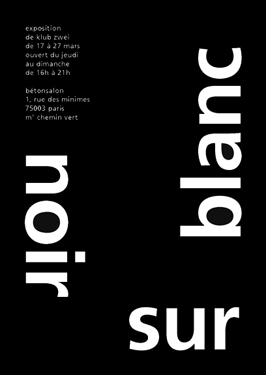Bétonsalon, Paris
Curators: Mélanie Bouteloup, Marie Cozette, Cyril Dietrich, organised by Georg Leutner.
Klub Zwei,
Black and White.
The Back of the Images.
A/GB 2003
On 19 April 1943 German troops entered the Warsaw ghetto to begin the final round of deportations. They met with unexpected resistance. The Warsaw Ghetto Uprising continued for 20 days before it was quashed under the command of SS Brigadeführer (Major-General) Jürgen Stroop. Of those who survived the Warsaw Ghetto Uprising, 7,000 were deported to Treblinka death camp and 42,000 to the SS concentration camps in the Lublin area: Majdanek, Poniatowo and Trawniki.
As a “commemoration” of the liquidation of the ghetto, a report was commissioned from Stroop by SS-General Governement in Kraków. The Stroop Report was essentially a photo album bound in black leather with a title page, “The Jewish Quarter of Warsaw is no more!” [“Es gibt keinen jüdischen Wohnbezirk in Warschau mehr!”] It was divided into three parts: a summary of SS operations, daily communiqués and approximately 54 photographs taken of the uprising with handwritten captions in gothic script. One of the photographs, which shows a young boy with his hands up standing among those arrested, surrounded by German troops, was captioned, “Pulled from the bunkers by force.” [“Mit Gewalt aus Bunkern hervorgeholt”] This photograph would become an icon of the destruction of European Jewry and one of the most widely used images of the Holocaust.
The original Stroop Report is kept at the Instytut Pamieci Narodowey (IPN) in Warsaw. The National Archives and Records Administration (NARA) in Washington, DC, hold a microfilm copy, made in September1945 and used as evidence in the Nuremberg Tribunal. Both the IPN and NARA consider that photographs from the Stroop Report are in the public domain. This means that, apart from paying a fee for a print, anyone can reproduce them free of charge.
While there are those who genuinely seek to find themselves or relatives in photographs, there are others not associated with the Holocaust who seem to have a need to identify with it. The US Holocaust Memorial Museum photo archive regularly receives visitors who claim to have seen themselves or relatives in the photographs displayed in the exhibitions. The same has happened in Yad Vashem and the Ghetto Fighters’ House.
Both Sharon Muller and Daniel Uziel, photo archivist at Yad Vashem, say it is not always difficult to test the validity of the claim. Sometimes it is a matter of simply asking where the person was during the war. At other times it is not so easy. Although no one is yet known to have positively identified anybody in an atrocity photograph, there are “favourite” photographs in which many people claim to see themselves. The one which men most want to be associated with is that of the small boy with his hands raised taken during the liquidation of the Warsaw ghetto in 1943.
Yad Vashem, the US Holocaust Memorial Museum and the Ghetto Fighters’ House have all had a number of visits, letters or phone-calls from those who claim either to be the boy or to know who he is. The conflicting identifications and accounts of the fate of the boy in the Warsaw ghetto have, not surprisingly, been seized on by Holocaust deniers. The majority of interpretations of this photograph imply that the boy was killed in Treblinka. In 1994 an article in the Holocaust deniers’ journal, the Journal of Historical Review, referred to it as the “all purpose” Holocaust illustration and disputed claims that the boy was murdered.
Janina Struk, Photographing The Holocaust. Interpretations of the Evidence, London 2004
